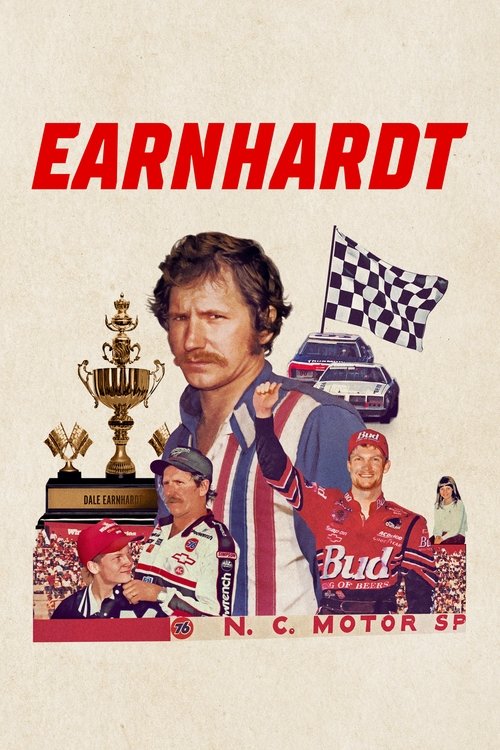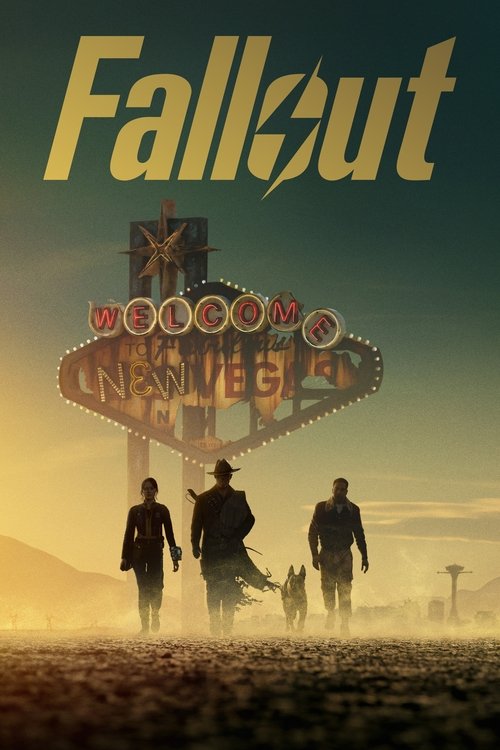
Ask Your Own Question
What is the plot?
The TV series Earnhardt (2025) opens with Dale Earnhardt Sr. in his office, expressing his deep passion for racing, describing it as the biggest thrill of his life and the central focus of his sacrifices. He reflects on the fleeting nature of life and the suddenness with which it can end, setting a somber tone for the series.
The narrative then shifts to Dale's early career, showing his rise as a formidable NASCAR driver known for his aggressive style on the track. Archival footage highlights his intense racing tactics, including his signature bumping moves, which earned him the nickname "The Intimidator." The series interweaves this with backstory about his childhood and personal life, revealing the working-class roots that shaped his character and drive.
As Dale's fame and fortune grow, the series explores the complex dynamics within his family. His children--Kelly, Dale Jr., and Kerry--are shown struggling with their desires for independence while simultaneously seeking their father's approval. Kelly, in particular, takes on a nurturing role for her younger brother Kerry, trying to hold the family together amid the pressures of their father's demanding career.
The series delves into Dale's relationship with his third wife, Teresa Earnhardt, who played a crucial role in managing his financial and media success. However, Teresa is also portrayed as a significant obstacle in Dale's relationship with his children, contributing to communication breakdowns and emotional distance. One poignant sequence shows Teresa and Dale attempting to buy Dale Jr. an art set to encourage his creativity, but they fail to realize that Dale Jr.'s drawings are exclusively of stock cars, reflecting his true passion and desire to follow in his father's footsteps.
Throughout the series, the children's jealousy and feelings of neglect surface, especially as Dale grows closer to other drivers and spends less time with them. Despite Dale's public expressions of love and pride for his children, the series reveals his difficulty in articulating these feelings in person, adding layers to his complex personality.
The documentary also covers the tragic aspects of the family's story, including the emotional toll of Dale's relentless focus on racing and the eventual impact of his death. The series uses rare archival footage and emotionally revealing interviews with family members, colleagues, and friends to paint a vivid portrait of Dale Earnhardt Sr. as both a legendary sports figure and a flawed family man.
In the final episodes, the legacy of Dale Earnhardt Sr. is shown through the continued careers and lives of Kelly, Dale Jr., Kerry, and Taylor. The series closes on a note of resilience and fortitude, emphasizing how the family's legendary status in NASCAR endures despite the personal struggles and tragedies they faced.
The series is structured chronologically but frequently intersperses past and present to provide context and emotional depth, culminating in a comprehensive and intimate exploration of Dale Earnhardt Sr.'s life on and off the track.
What is the ending?
The TV series Earnhardt (2025) ends with a poignant reflection on the legacy of Dale Earnhardt Sr., focusing on how his larger-than-life persona shaped not only NASCAR but also deeply affected his family. The final scenes show his children--Dale Jr., Kelley, Kerry, and Taylor--carrying forward his legacy with a mix of pride, struggle, and resilience, underscoring the emotional inheritance of being part of the Earnhardt dynasty.
Expanding on the ending scene by scene:
The series closes by revisiting the complex family dynamics that defined much of Dale Earnhardt Sr.'s life. It begins with a quiet moment where Dale Jr. and Kelley are shown grappling with the weight of their father's name. Kelley, who once raced herself, is portrayed as a stabilizing force behind the scenes, managing the family business and supporting her brother. This scene highlights her role as both caretaker and leader, emphasizing the emotional labor involved in sustaining the Earnhardt legacy.
Next, the narrative shifts to a flashback of Dale Sr. with his third wife, Teresa, attempting to connect with Dale Jr. through a gift--an art set meant to encourage his drawings. The poignant detail that Dale Jr.'s drawings were exclusively of stock cars reveals the communication gaps within the family. This moment underscores the emotional distance between Dale Sr. and his children despite his public persona as a devoted father.
The series then moves to a montage of archival footage showing Dale Sr.'s dominance on the NASCAR circuit, juxtaposed with scenes of his children feeling sidelined and jealous as their father grew closer to other drivers. This contrast illustrates the personal sacrifices and emotional costs behind Dale's public success.
In the final scenes, the camera lingers on the present-day Earnhardt siblings, each reflecting on their father's impact. The narrative emphasizes that the legacy they inherited is not just about fame or fortune but about enduring emotional challenges and forging their own identities. The series closes on a note of resilience, showing the family united in their shared history and determination to honor Dale Sr.'s memory while navigating their own paths.
Throughout the ending, the series uses intimate moments and archival footage to paint a vivid picture of a man whose public image as "The Intimidator" was both a strategy and a shield, and whose family life was marked by complexity and emotional depth. The closing scenes underscore the theme that legacy is not simply inherited but actively shaped by those who live it.
Is there a post-credit scene?
The TV show Earnhardt produced in 2025 does not have a post-credit scene. The available information about the show, which is a four-part documentary on Amazon Prime Video about Dale Earnhardt Sr.'s life and legacy, does not mention any post-credit scenes or additional footage after the episodes end. The documentary focuses on Earnhardt's racing career, family relationships, and the aftermath of his death, but it concludes without extra scenes following the credits.
Other 2025 shows and films like Sinners and The Fantastic Four: First Steps do have post-credit scenes, but these are unrelated to Earnhardt.
What are the 5 most popular questions people ask about the TV show Earnhardt (2025) that deal specifically with the content of the story itself, excluding 'What is the overall plot?' and 'What is the ending?'
The five most popular questions about the content of the TV show Earnhardt (2025), focusing on the story itself, are:
- How does the series portray Dale Earnhardt Sr.'s rise from a working-class background to NASCAR stardom?
- What aspects of Dale Earnhardt Sr.'s personal and family life are explored in the series?
- What rare or never-before-seen archival footage is included to illustrate Dale Earnhardt Sr.'s racing career?
- How does the show depict Dale Earnhardt Sr.'s impact on NASCAR and its cultural significance?
- What insights do interviews with Dale Earnhardt Sr.'s family and friends provide about his character and legacy?
These questions arise from the show's focus on an intimate exploration of Dale Earnhardt Sr.'s ascent, his family dynamics, and his influence on the sport and popular culture, supported by archival footage and personal interviews.
Is this family friendly?
The 2025 TV series Earnhardt is a documentary-style exploration of Dale Earnhardt Sr.'s life, focusing on his impact on his family and the racing world. It is generally suitable for a broad audience but is not specifically designed as a family-friendly show for young children.
Potentially objectionable or upsetting content includes:
- Emotional and intense moments related to the dangers of NASCAR racing, including references to accidents and tragedies within the sport.
- Discussions of personal and family struggles, including unresolved hurt and regret among the Earnhardt family members.
- Some candid interviews that reveal complex and sometimes difficult aspects of Dale Earnhardt Sr.'s personality and relationships, which may be sensitive for younger viewers or those sensitive to family conflict or emotional pain.
The series does not appear to contain graphic violence or explicit content but does deal with mature themes such as loss, rivalry, and personal challenges in a serious and sometimes emotional manner.

























